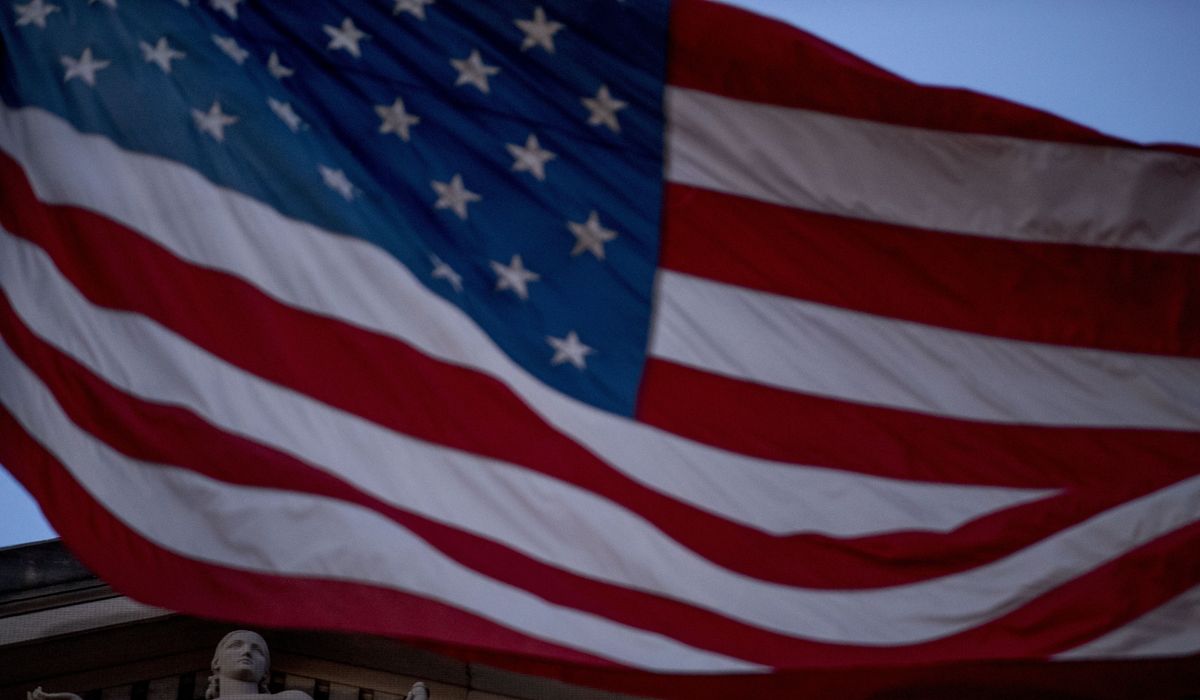The United States enjoys far and away the world’s most powerful brand name while Russia has seen its value and prestige plummet over the past year, according to a major new survey that also shines a light on the rising economic might of Asia, which now boasts three of the globe’s top 10 most valuable national “brands.”
The 2023 national brand value rankings were released Thursday by the Institute of Nation Brand Promotion (NBP), headed by Dr. Dong-sung Cho of the Institute for Industrial Policy Studies – Switzerland. Mixing both “soft” and “hard” power attributes, the study examines all aspects of a given nation’s financial power, the value of its exports, its economic competitiveness, the competence of its government and civil society, its reputation abroad and numerous other factors.
Despite deep political divisions on display in recent years, the U.S. remains on top by a considerable margin, with a name brand value of $41.3 trillion, the study estimated. Germany came in second at $20.7 trillion.
China is quickly moving up the list and landed at No. 3 with a brand value of $11.6 trillion. Japan and South Korea also place in the top 10, as do the U.K. and France, but those European powers have moved down the pecking order in recent years amid the broader global shift of power toward the Pacific. The Netherlands, Canada and Italy rounded out the top 10.
The most dramatic change came in Russia, which dropped from No. 23 to No. 39.
Moscow’s precipitous fall reflects “the detrimental impact of war” with Ukraine in its national value, reads the report.
Russia’s tumble down the list could continue as its stalemated war with Ukraine nears its third year. The earnings and economic aspects of Russia’s brand value stayed relatively stable over the past year, the study said, but its “nation brand power” took a major hit.
The brand power portion of the calculation includes a nation’s competitiveness, its “psychological proximity” — measured by its leadership, political stability, human rights situation, its relationships with other countries, the willingness of foreigners to visit and other factors — and the roles played by government, business, civil society and its citizenry.
The U.S. topped the “brand power” list by a considerable margin, fueling its top spot in the broader “brand value” category. South Korea also turned in an impressive showing, remaining at No. 7 on the brand value list for the second year in a row.
South Korea’s “people, businesses and government have received high accolades for their strategic contributions to nation branding,” reads a portion of the report, which was publicly unveiled Thursday at a major international event, the “Global Conference on National Competitiveness and Nation Brand.”
The event was organized by the institute, also known as IPS-S and the United Nations Institute for Training and Research. The Institute for Policy and Strategy on National Competitiveness and the Institute of Nation Brand Promotion hosted the event. It was sponsored by aSSIST University, Franklin University Switzerland, Kyung-In Broadcasting Co. and The Washington Times.
The organizations on Thursday also released comprehensive national competitiveness rankings of 62 global economies and examined how those rankings played a role in countries’ overall brand value.
“We believe that the insights garnered from this conference will be invaluable to scholars, practitioners, and policymakers, offering a deeper understanding of national competitiveness and sustainable growth strategies,” Dr. Cho said in a press release.
In the 2023 competitiveness rankings, Singapore had the highest overall index, while Denmark came in second and Canada third. The U.S. ranked No. 5, while China was at No. 18.
The overall index incorporates two scores, based on two different competitiveness strategies. National competitiveness was evaluated using eight factors, which were divided into four physical and four human elements. The physical factors include supply conditions, demand conditions, related industries, and the business context, while the human side of the equation looks at workers, policymakers and administrators, entrepreneurs, and professionals.
If a country adopted a cost strategy, then cost-driven elements like factory conditions and workers are weighted more heavily. The differentiation strategy, meanwhile, placed a greater emphasis on factors such as demand conditions and professionals.
𝗖𝗿𝗲𝗱𝗶𝘁𝘀, 𝗖𝗼𝗽𝘆𝗿𝗶𝗴𝗵𝘁 & 𝗖𝗼𝘂𝗿𝘁𝗲𝘀𝘆: www.washingtontimes.com
𝗙𝗼𝗿 𝗮𝗻𝘆 𝗰𝗼𝗺𝗽𝗹𝗮𝗶𝗻𝘁𝘀 𝗿𝗲𝗴𝗮𝗿𝗱𝗶𝗻𝗴 𝗗𝗠𝗖𝗔,
𝗣𝗹𝗲𝗮𝘀𝗲 𝘀𝗲𝗻𝗱 𝘂𝘀 𝗮𝗻 𝗲𝗺𝗮𝗶𝗹 𝗮𝘁 [email protected]



